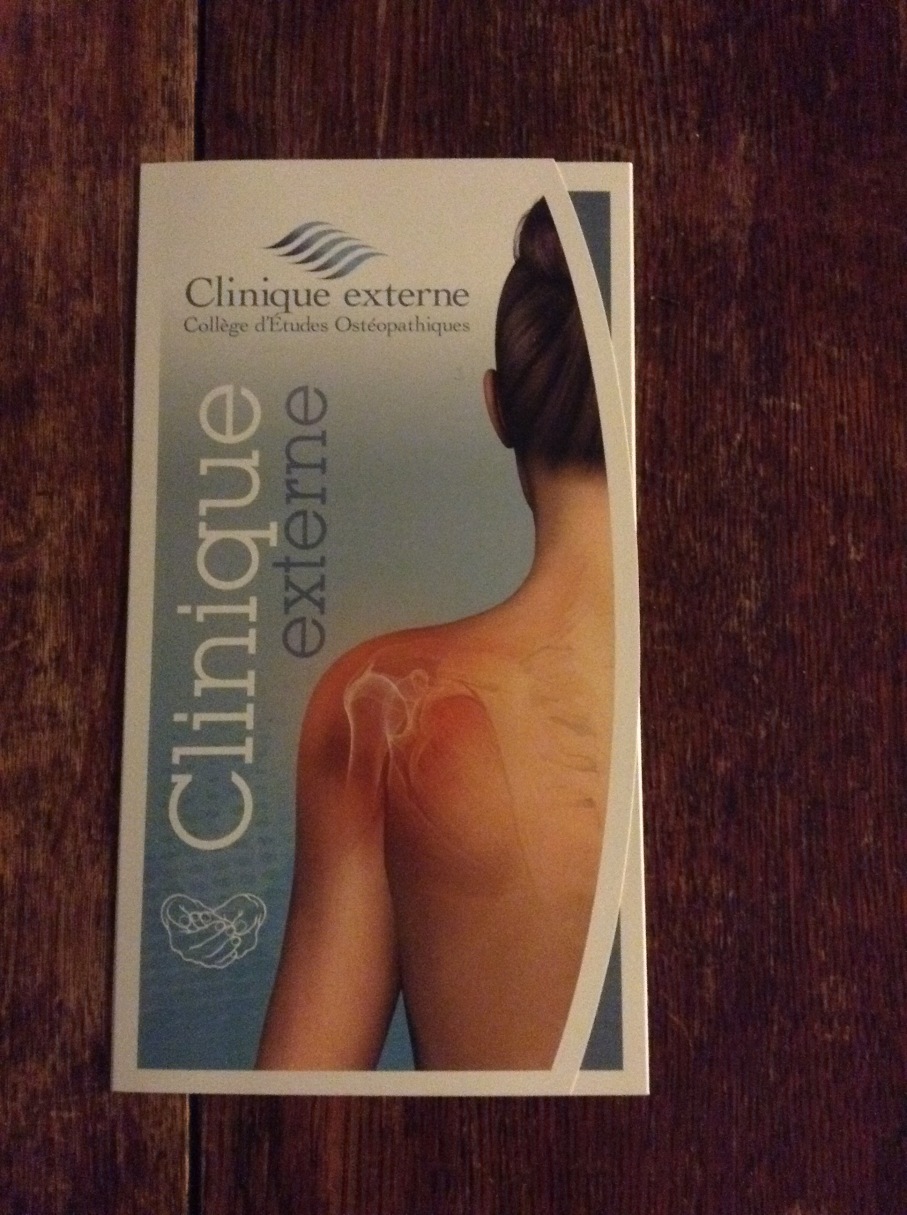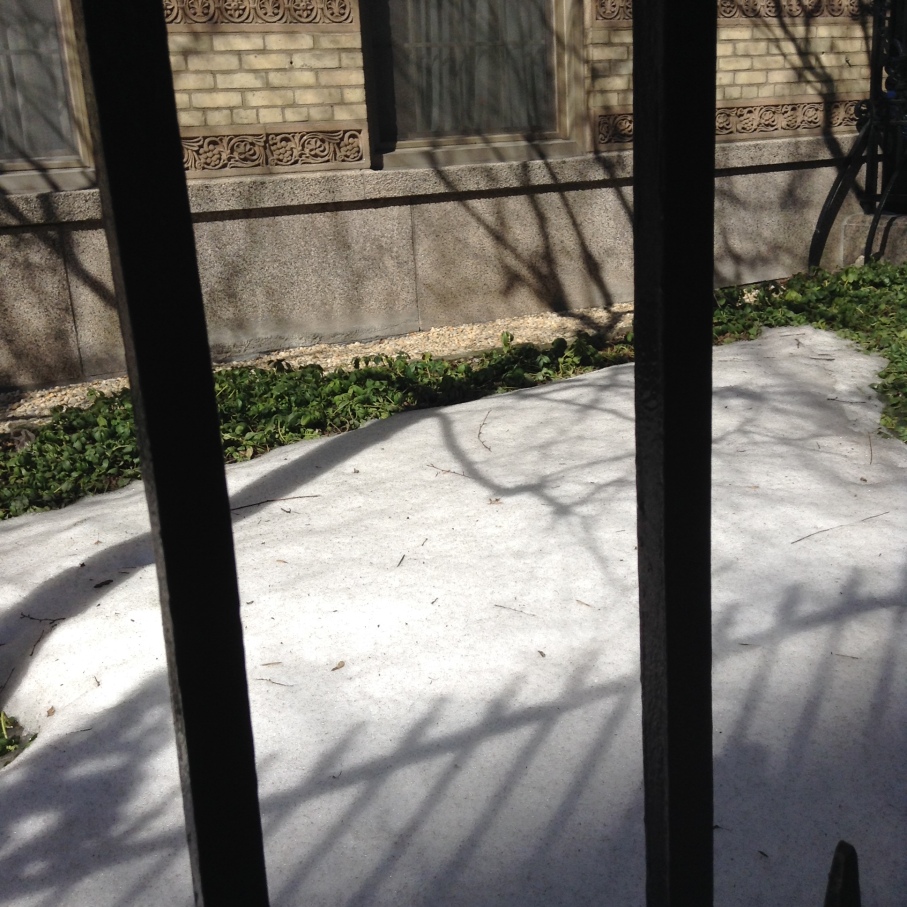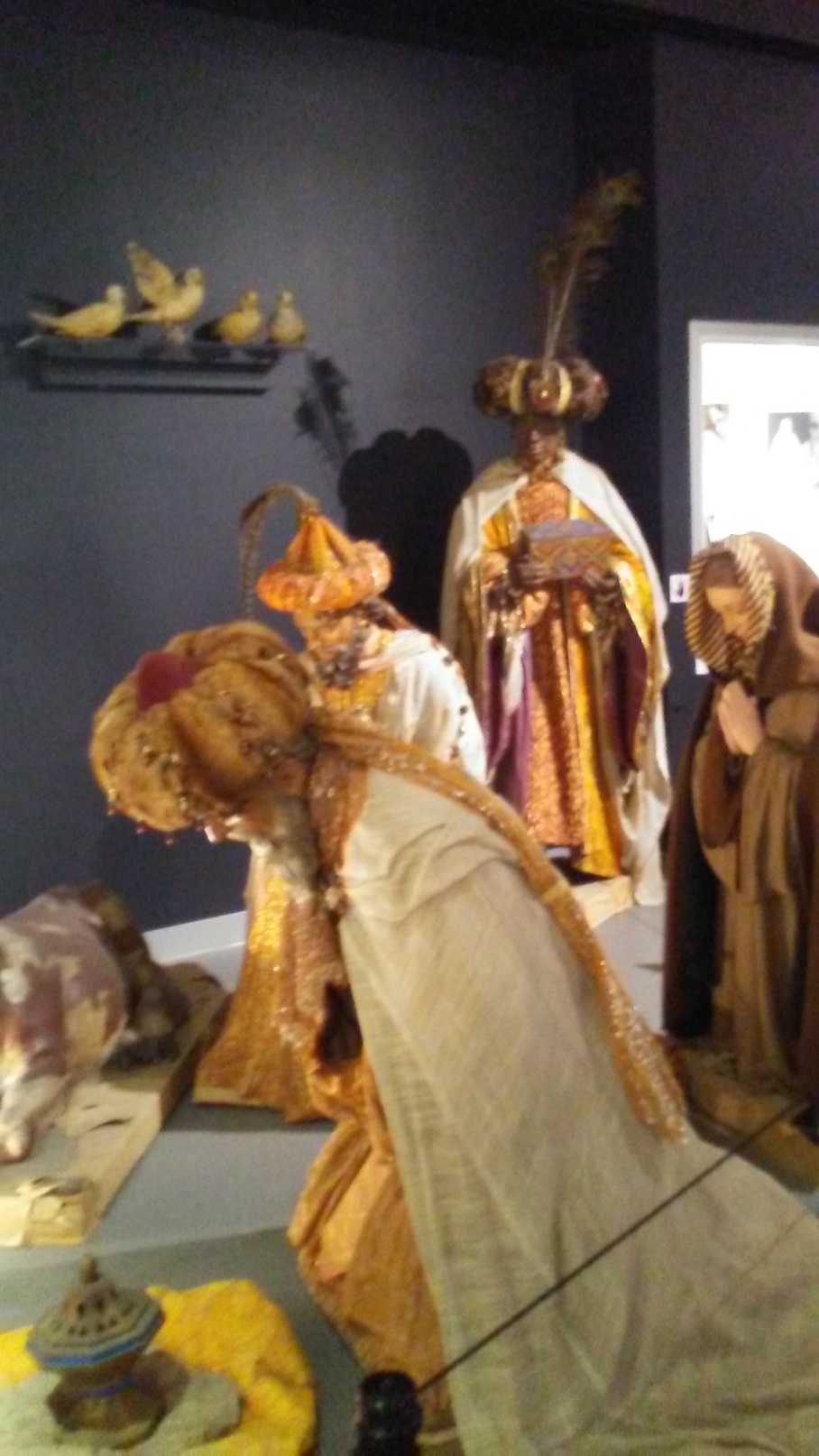
I’ve been wanting to write about my visits to the College of Osteopathy Studies here in Montreal for some time. Some family members urged me to go and have someone look at my knee about two years ago. To my surprise, some gentle manipulations made me feel a lot better. Since then I have sporadically gone back for help from the friendly students of this college.
I had a hip replacement about eight years ago which was a great success, thanks to my wonderful surgeon, Dr. Paul Stephenson. He did a brilliant job and I’ve been dancing a jig ever since. So, you can see I literally have one foot in the camp of strictly conventional medicine.
Well, not quite, obviously, or I wouldn’t be visiting the osteopaths. When I first went, I was a bit skeptical and researched what exactly osteopathy is. The whole field of “alternative medicine” is rather mysterious for someone who worked in a conventional hospital for years. I came to some understanding of the term “Naturopathy” through an explanation that defined it as a branch of medicine that added nothing – like drugs and took nothing away – as does surgery.
What intrigued me very much was the history of the founder of osteopathy. He was an American doctor, son of a Protestant minister, who practiced during the Civil War. Dr. Andrew Taylor Still lost his wife and all his children to an epidemic and, grief-stricken, he decided to develop a different kind of medicine that would improve on the methods he had seen employed during the war. Of course, amputations, use of heavy sedatives, radical surgery and his own family experience with illness were powerful motivators.
Drawing on his medical skills and his personal religious convictions, he put forward a method of treatment that saw the patient as a whole being made up of body, mind, and spirit. There is a strong tradition of “laying on of hands” to heal, clearly set out in the New Testament and in the Book of Acts which certainly was part of Dr. Still’s philosophy. I was fascinated by this aspect. I had a vivid memory of being taken as a child to the gentleman who treated the rugby players in our gritty Welsh town. Jack Lyshun was a natural healer and manipulator, skilled at “fixing up” formidable players of the toughest brand of football. Following a mysterious infection, I was unable to walk properly. After a few sessions with “Jack”, I was as right as the implacable rain of my hometown and the whole episode was forgotten.
These thoughts and memories ran through my head last week as two students of the College, under the watchful eye of their instructor, observed how I stood, walked, shifted from foot to foot. They did more than observe and diagnose. They “laid hands” on me, gently, firmly, surprisingly at some moments. One of them manipulated the elegant scar of my hip replacement surgery. He explained that the scar was rather like the seam in a piece of cloth. It tended to draw the tissue, to bunch it up. Of course, hip replacement is a profound business. I am always shocked to see how far down the pin that holds the replacement in place reaches – almost to my knee. In X-Rays it leaps out, solid and white among the shadowy images. Skin, muscles, tendons, the socket, all this and others, of which I am mercifully unaware, are sundered, manipulated, replaced, repaired by the surgeon. Such a surgery is a controlled assault. Osteopathy’s approach of touch, pressure, manipulation is quite different.
My whole body was under scrutiny – and was treated. The other leg, the “good” leg has had years of compensating, adapting, relating. And why? So that I can go up and down stairs, run for the bus, swim, drive the car, make love, dance, climb a ladder – all this and more. Poor good leg that never complained and yet spoiled her gait because of the “bad” leg.
The two young people pulled my toes (a terrible point of shyness as I think my feet are not beautiful) rotated my ankles, took hold of my leg and applied pressure. They made me turn on my stomach and pressed my back. From time to time, one of them would exclaim about “feeling” something. He could notice some sort of current of energy. They seemed to know what they were doing. Good thing, since I did not. There was something satisfying about simply surrendering to their attention, their manipulations, their instructions.
And now, at home, what is the result of all this? My toes do not hurt anymore. I always ascribe the pain in my feet to arthritis, but one student said, no, it was all part of the alignment of the right leg. My knee is better but I still have some pain higher up. I will go to see them again next week.
Osteopaths have a difficult time being accepted in this province. The College des Medicins traditionally fights against any other profession encroaching on what they think is remotely related to conventional medicine. Midwives, for instance, had a terrible time getting recognized and encouraged to practice. There still remains something mysterious about osteopathy. But then, one could hardly say conventional medicine is free of mystery, even that it is transparent. The bottom line is ….does it work? Mercifully, it does for me.
 I don’t match. My colors are all wrong.
I don’t match. My colors are all wrong.

![IMG_8484[1]](https://isobelmtl.com/wp-content/uploads/2020/03/img_84841-2.jpg?w=908)







